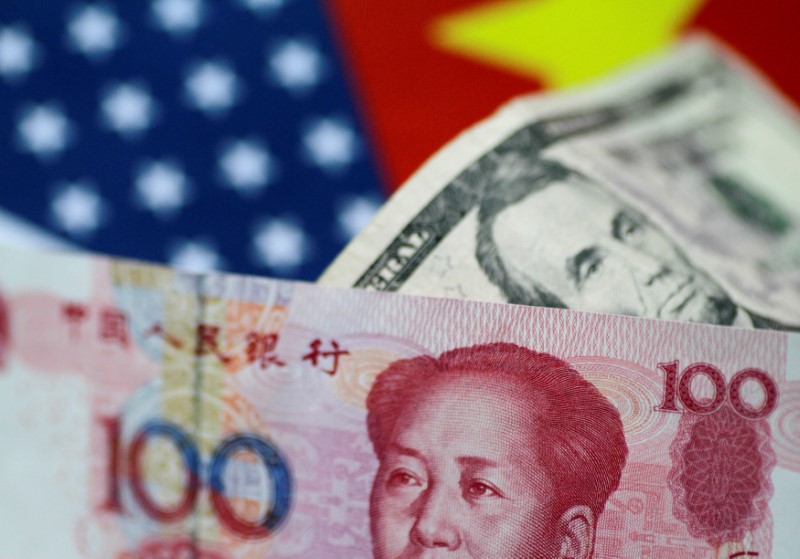
Sentiment towards risk-driven regional markets remained weak, especially as hawkish comments from the Federal Reserve continued to trickle in. Concerns over sluggish regional economic growth also weighed.
The dollar index and dollar index futures both rose 0.1% in Asian trade, extending overnight gains after Minneapolis Fed President Neel Kashkari said that policymakers had not ruled out more rate hikes to combat inflation.
His comments come just days before closely-watched PCE price index data, which is the Fed’s preferred inflation gauge.
The Chinese yuan weakened, as a soft midpoint fix by the People’s Bank of China saw the USDCNY pair reach its highest point since mid-November.
The PBOC has so far maintained a tight grip on the yuan to stem weakness in the currency, but now appeared to be slightly loosening that grip amid sustained selling pressure against the yuan and weakness in the Chinese economy.
Beijing continued to roll out supportive measures for the property market, helping inspire some optimism over the country. But traders remained doubtful over just how Beijing planned to fund and execute its stimulus measures for the property sector, given that the space was in an over three-year slump.
The Japanese yen weakened further on Wednesday, with the USDJPY pair rising past 157 yen to the dollar.
The currency took little support from somewhat middling comments from Bank of Japan officials.
BOJ member Adachi Seiji warned that the central bank could tighten policy hastily if weakness in the yen impacted inflation. He also forecast that inflation would increase in the Summer-Autumn period.
But Seiji also said that the BOJ needed to be cautious in how it would tighten policy, and that policy would remain accommodative in the near-term to foster strength in the Japanese economy.
The Australian dollar saw limited strength on Wednesday, with the AUDUSD pair rising marginally even as consumer price index inflation grew more than expected in April.
The reading ramped up expectations that the Reserve Bank of Australia will have to keep rates high for longer, or even hike them further this year, to bring down inflation.
Such a scenario bodes well for the Aussie, although this optimism was countered by strength in the dollar and concerns over slowing economic growth in Australia.
Broader Asian currencies weakened. The South Korean won’s USDKRW pair rose 0.2%, while the Singapore dollar’s USDSGD pair added 0.1%.
The Indian rupee’s USDINR pair rose 0.1% and was seen moving back towards record highs hit in May, above 83 rupees to the dollar.
To read the full article, Click Here

